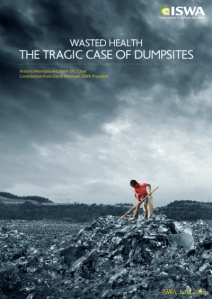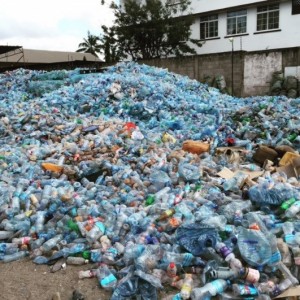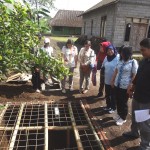Reposted from Sanitation Updates:
This video goes beyond toilets and discusses the sanitation value chain.
Reposted from Sanitation Updates:
We discussed the experience of tools for market mapping and analysis and how these can be utilised as the basis for market strengthening, and will identify effective ways to support governmental authorities to work with private sector actors in market development.
Other sessions are on the ODI YouTube Channel.
Summary of the study noted below is reposted from Sanitation Updates.
Improving health in cities through systems approaches for urban water management. Env Health, Mar. 2016. Authors: L. C. Rietveld, J. G. Siri, et al.
As human populations become more and more urban, decision-makers at all levels face new challenges related to both the scale of service provision and the increasing complexity of cities and the networks that connect them. These challenges may take on unique aspects in cities with different cultures, political and institutional frameworks, and at different levels of development, but they frequently have in common an origin in the interaction of human and environmental systems and the feedback relationships that govern their dynamic evolution.
Accordingly, systems approaches are becoming recognized as critical to understanding and addressing such complex problems, including those related to human health and wellbeing. Management of water resources in and for cities is one area where such approaches hold real promise.
Below is an abstract from a study by Dreibelbis, et al.: Behavior Change without Behavior Change Communication: Nudging Handwashing among Primary School Students in Bangladesh.
Behavior change communication for improving handwashing with soap can be labor and resource intensive, yet quality results are difficult to achieve. Nudges are environmental cues engaging unconscious decision-making processes to prompt behavior change. In this proof-of-concept study, we developed an inexpensive set of nudges to encourage handwashing with soap after toilet use in two primary schools in rural Bangladesh. We completed direct observation of behaviors at baseline, after providing traditional handwashing infrastructure, and at multiple time periods following targeted handwashing nudges (1 day, 2 weeks, and 6 weeks). No additional handwashing education or motivational messages were completed. Handwashing with soap among school children was low at baseline (4%), increasing to 68% the day after nudges were completed and 74% at both 2 weeks and 6 weeks post intervention. Results indicate that nudge-based interventions have the potential to improve handwashing with soap among school-aged children in Bangladesh and specific areas of further inquiry are discussed.
This study in the December 2015 Issue of Social Science and Medicine evaluated discussions and commitment interventions among shared toilet users in three urban slums in Kampala, Uganda The abstract is reposted below:
Rationale and objective
Access to and use of hygienic shared sanitation facilities is fundamental in reducing the high risk of diseases such as diarrhoea and respiratory infections. We evaluated the effectiveness of group discussions and commitment in improving the cleaning behaviour of shared sanitation users in three urban slums in Kampala, Uganda. The study follows the risk, attitudes, norms, abilities and self-regulation (RANAS) model of behaviour change and some factors of the social dilemma theory.
Methods
A pre-versus post-intervention survey was conducted in three slums of Kampala, Uganda, between December 2012 and September 2013. From the pre-intervention findings, users of dirty sanitation facilities were randomly assigned to discussions, discussions + commitment and control interventions. The interventions were implemented for 3 months with the aim of improving cleaning behaviour. This paper provides an analysis of 119 respondents who belonged to the intervention discussion-only (n = 38), discussions + commitment (n = 41) and the control (no intervention, n = 40) groups.
Results
Compared to the control, discussions and discussions + commitment significantly improved shared toilet users’ cleaning behaviour. The rate of improvement was observed through behavioural determinants such as cleaning obligation, cleaning ease, cleaning approval and affective beliefs.
Conclusion
Our study findings show that group discussions and commitment interventions derived from RANAS model of behaviour change are effective in improving the shared sanitation users’ cleaning behaviour.
A video made by Water and Sanitation for the Urban Poor (WASUP) details a study intended to explore the links between sanitation, population density, and health outcomes in Maputo, Mozambique. The video describes a controlled, before-and-after trial of an urban sanitation intervention to reduce enteric infections in children.
The link to the video is here: https://www.youtube.com/watch?v=Nyk-3jWdzn0
Wasted Health: The Tragic Case of Dumpsites | | Source: by Thomas Dimech | Resource, 8 September 2015 |
A new report by the International Solid Waste Association (ISWA) is highlighting the ‘global health emergency’ affecting tens of millions of people in developing countries who lack good sanitation infrastructure. 
The report, ‘Wasted Health: The Tragic Case of Dumpsites’, illustrates how the issues surrounding open dumpsites in the developed world 40 years ago are still prevalent in developing countries, but are also being compounded by unprecedented issues such as the unregulated accumulation of discarded electronics, mobile phones, and medical waste.
Some of the main problems identified in the report include:
- open dumpsites receive roughly 40 per cent of the world’s waste and serve about 3.5 to 4 billion people;
- there has been a substantial rise in unregulated dumping of mobile devices, electronic appliances, medical and municipal waste, accelerating the scale of the threat and health risks;
- uncontrolled burning of waste releases gases and toxins into the atmosphere;
- open waste sites in India, Indonesia and the Philippines are more detrimental to life expectancy than malaria;
- 64 million people’s lives (equal to the population of France) are affected by world’s 50 largest dumpsites;
- in addition to the human and environmental impacts, the financial cost of open dumpsites runs into the tens of billions of US dollars.
Can we shift waste to value through 3D printing in Tanzania? World Bank Blog, Sept 2015. Author: C. Paradi-Guilford.
Plastic waste, in particular PET, which is typically found in soda bottles, is becoming abundant in African cities. In Dar es Salaam, one of the most rapidly urbanizing cities in Africa,BORDA found that about 400 tons of plastic waste per day remains uncollected or unrecycled. Although about 98 percent of the solid waste generated per day can be recycled or composted, 90 percent is disposed in dumpsites.
At the same time, the recycling industry has started to grow because of new initiatives, community organizations and private companies. There are a few organizations that repurpose waste into arts and crafts, tools or apply it as a source of energy – such as WasteDar. However, the majority collect or purchase plastic waste from collectors, primarily with a view to export, rather than recycle or reuse locally.
Socially and environmentally, waste management is one of the biggest challenges for an increasingly urbanized world. Waste pickers can earn as little as US$1-2 a day in dangerous conditions with little opportunity for advancement. They make up some of the most disadvantaged communities living in deep poverty.
Through a new market for sorted waste materials, these communities may access higher income generation opportunities in a sustainable manner. This presents an opportunity to explore turning this waste into value more close to home.
At the same time, 3D Printing is expanding
3D printing is an additive manufacturing process that applies layers of materials (typically plastic) to develop an object that is made up of thinly sliced horizontal layers. The design of the object is made in a Computer-Aided Design program using a 3D modeling, then is inputted into the 3D printer. Gaining popularity, 3D scanners are also used to make a digital copy of ab object. 3D printers take an input of filament consisting of varying types of plastic to create the object.
Bringing Back the Water: USAID’s Indonesia Urban Water, Sanitation and Hygiene (IUWASH) program, Frontlines, Sept/Oct 2015.
Changes in weather patterns are already affecting everyday life in Indonesia. On the islands of Sumatra and Java, places naturally lush with vegetation, rivers and streams are beginning to dry up, exacerbated by heavy deforestation and expanding urban areas.
When it does rain, it is often more intense now and causes flooding in downstream populated areas. USAID’s Indonesia Urban Water, Sanitation and Hygiene (IUWASH) program has promoted a simple way to collect this rain and return it to groundwater aquifers: infiltration ponds.
Read the complete article.








